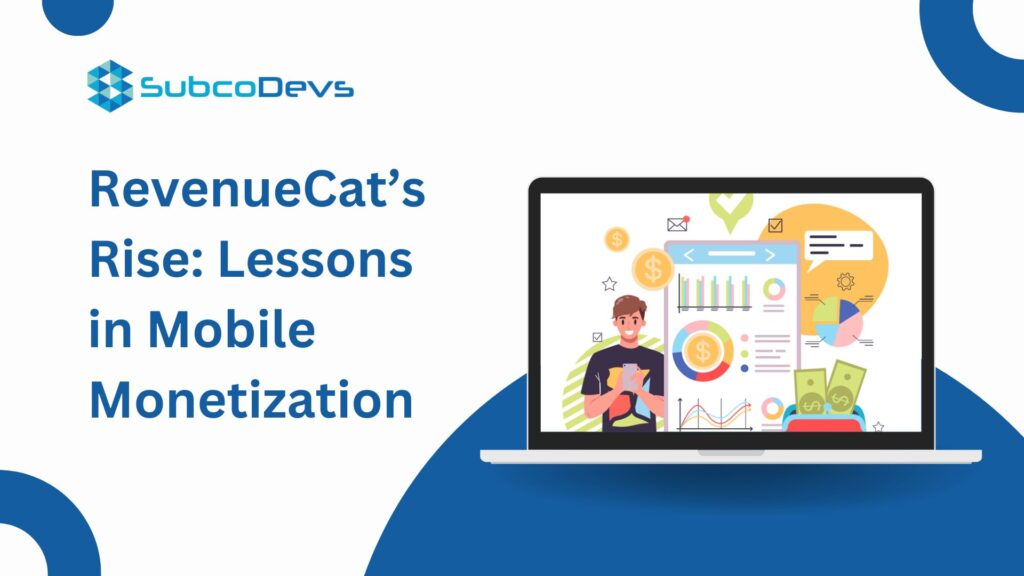In the mobile-first world, it’s easy to focus on front-end trends or viral ideas. But behind every successful app is robust infrastructure like RevenueCat mobile app monetization, which has powered major growth stories.
That’s what makes RevenueCat’s journey so inspiring—and instructive. From a $7M valuation in 2018 to over $500 million in 2025, RevenueCat quietly became the default monetization backbone for mobile subscription apps. Today, it powers one in every three new subscription-based mobile apps.
This isn’t just a story about growth. It’s a masterclass in understanding developer pain points, building durable systems, and scaling at the perfect time.
Let’s unpack how they did it—and what today’s app founders, product managers, and SaaS innovators can learn.
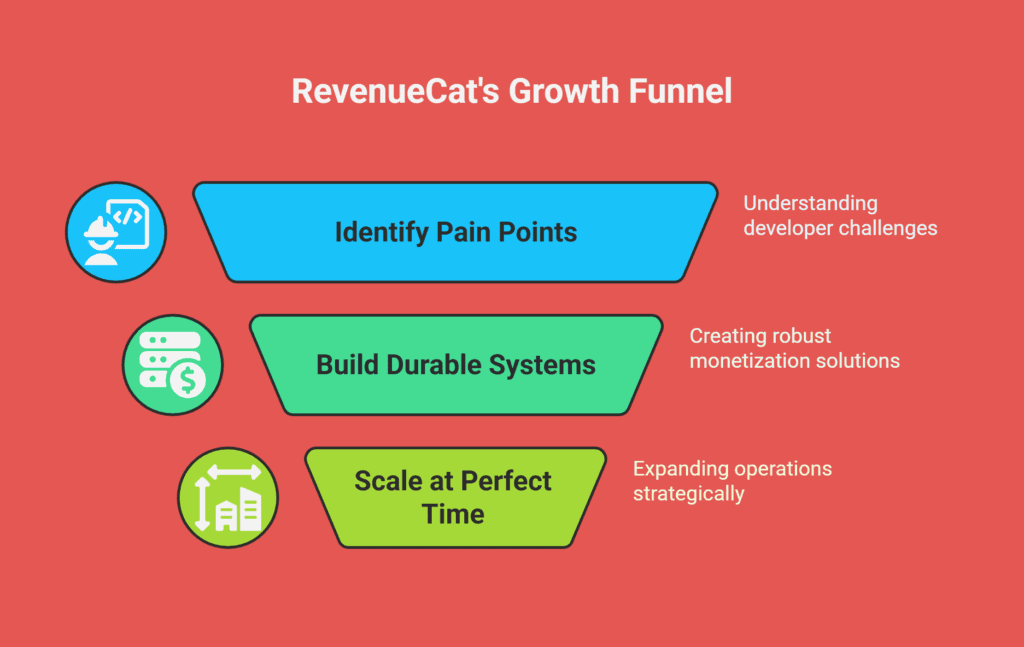
From API to Ecosystem: The RevenueCat Growth Trajectory
RevenueCat began with a simple yet bold mission: to abstract away the messy, error-prone complexity of in-app subscriptions. As mobile apps matured, so did monetization strategies—but the tools lagged behind. Developers found themselves spending weeks building custom logic for Apple and Google receipts, user entitlements, server validation, and renewals.
RevenueCat turned that chaos into a clean, unified API. With just a few lines of code, developers could implement subscriptions across platforms—while syncing user states, enabling trials, managing renewals, and tracking analytics in real time.
But they didn’t stop there.
As their user base grew, so did the platform. RevenueCat added SDKs for multiple frameworks, launched dashboards for product analytics, introduced paywall testing, expanded to web subscriptions, and more. They transformed from a backend tool into a complete subscription monetization platform.
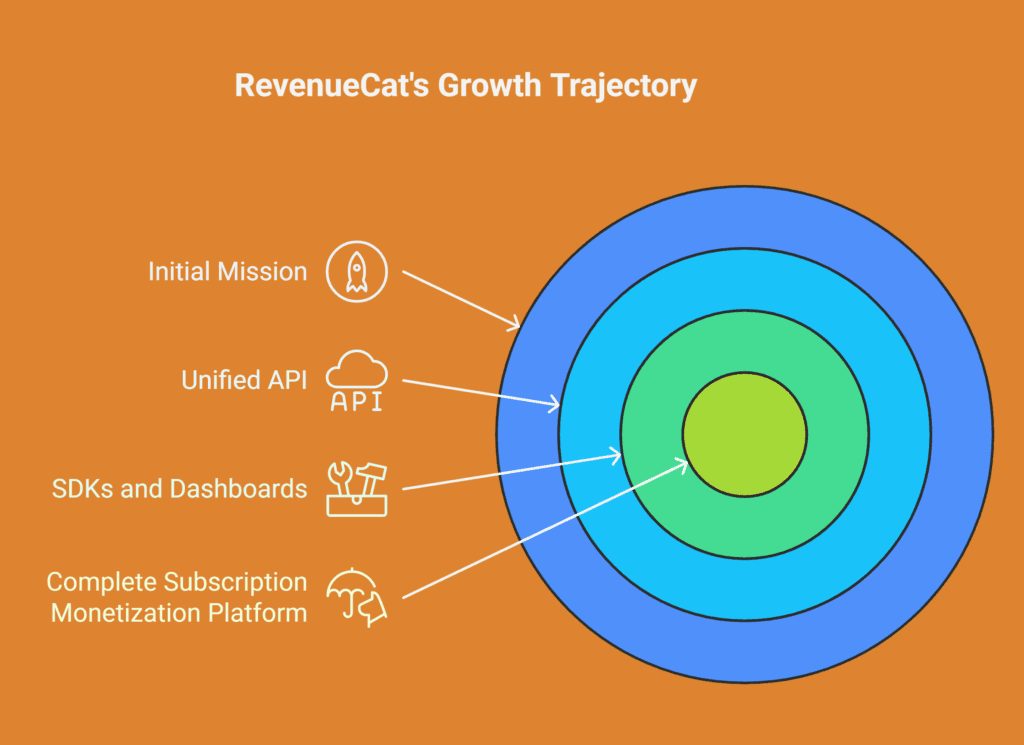
Four Strategic Levers Behind RevenueCat’s $500M Growth
1. Solving a Universal and Costly Developer Problem
The best products don’t start with an idea—they start with pain.
RevenueCat’s founders experienced firsthand how broken subscription infrastructure was. Instead of duct-taping together solutions like everyone else, they built something universal and elegant: a platform that could manage entitlements, handle purchases, sync cross-platform data, and adapt to changing app store policies.
💡 Insight: The more painful and widespread the problem, the more scalable your solution. RevenueCat solved a deep, recurring friction that developers were desperate to escape.
2. Focus Relentlessly on Developer Experience
RevenueCat started with developers in mind—not just product managers or marketers. This was key.
The SDKs were lightweight. The documentation was superb. The implementation time dropped from weeks to hours. Developers didn’t just use RevenueCat—they loved it. That developer-first DNA turned users into advocates, and individual apps into long-term partners.
💡 Insight: If you want adoption at scale, make the technical experience frictionless. Great UX isn’t just for end-users—it starts with your builders.
3. Adopt a Business Model That Aligns With Your Customers
RevenueCat’s early flat-fee pricing didn’t scale well across different customer sizes. So they pivoted to a revenue-share model.
This was a game-changer. It meant solo developers and indie teams could get started for free, while RevenueCat’s revenue grew as theirs did. At the same time, larger apps with millions in revenue had pricing models tailored to their scale.
💡 Insight: Aligning your pricing with customer success creates natural growth loops—and removes friction in early adoption.
4. Leverage Market Timing and Policy Shifts
RevenueCat launched just before the mobile subscription boom, which accelerated dramatically during COVID-19. Consumers embraced digital subscriptions—from fitness and productivity to mental health and dating apps.
At the same time, major shifts were happening in app store policy: Apple and Google started allowing more flexibility in billing and web expansion. RevenueCat moved quickly, adding web subscription support and external billing capabilities, keeping their platform ahead of regulatory and platform changes.
💡 Insight: Great products seize not just market needs, but market timing. RevenueCat scaled by catching two waves—mobile subscription growth and app store policy reform.
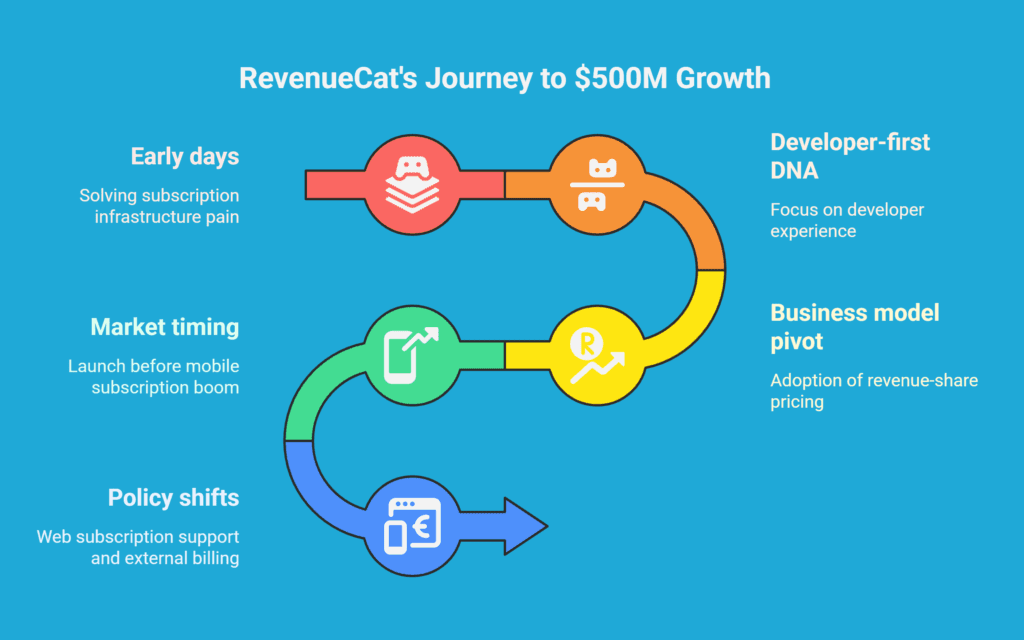
Key Lessons for Mobile App Founders and Product Teams
If you’re building—or scaling—a subscription-driven app, RevenueCat’s playbook offers some critical takeaways:
✅ 1. Prioritize Long-Term Infrastructure Over Short-Term Hacks
Growth isn’t sustainable if your backend is brittle. Invest in systems that can evolve with your user base, platform changes, and revenue models.
✅ 2. Treat Developer Experience as Product Experience
Your developers are internal users. If they can’t ship fast, iterate confidently, and trust the system, your whole app suffers.
✅ 3. Design for Pricing Flexibility
Rigid, flat pricing kills early-stage adoption and limits your TAM (Total Addressable Market). A revenue-share model—or usage-based billing—lets your product scale with customers.
✅ 4. Monitor Industry Shifts Aggressively
Regulatory, policy, and platform shifts aren’t risks—they’re opportunities. Be the first to adapt, and your product will lead while competitors lag.
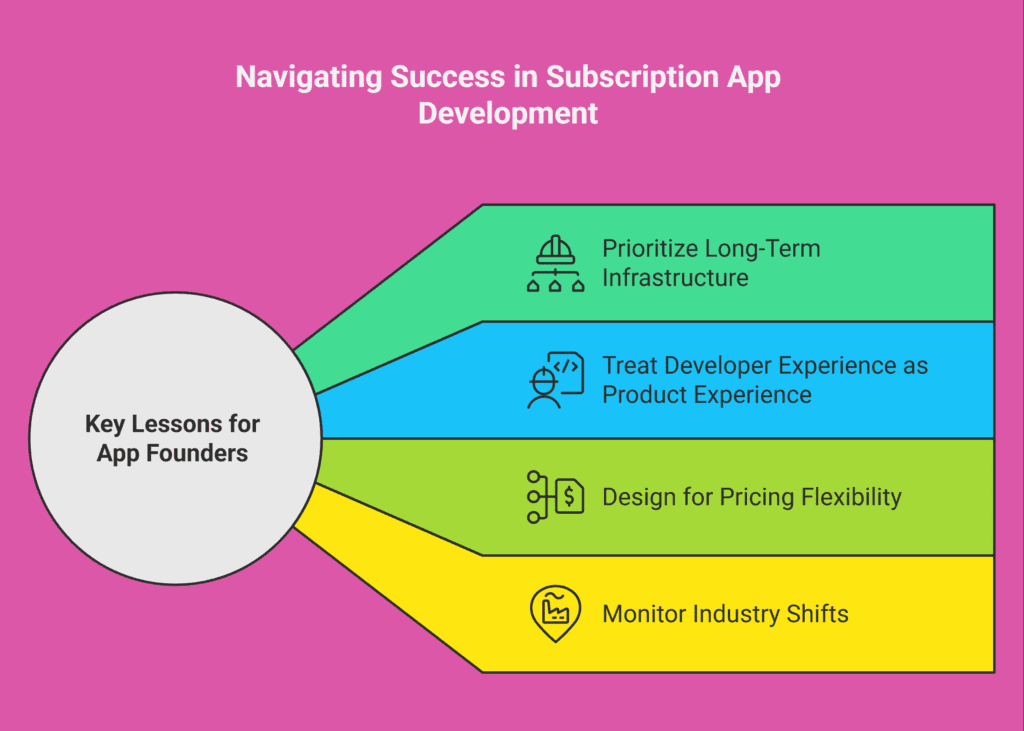
How SubcoDevs Helps You Monetize Like a Market Leader
At SubcoDevs, we help founders and tech leaders turn subscription challenges into monetization wins. Whether you’re integrating your first in-app purchase flow or migrating from fragile infrastructure, we build systems designed for growth, resilience, and experimentation.
Here’s what we deliver:
- Full-stack subscription integration for iOS, Android & Web
- Custom setup using RevenueCat, Stripe, or proprietary billing SDKs
- Precise webhook handling, entitlement management, and user tracking
- Support for AI-enhanced billing models, virtual currencies, tiered plans, and trial logic
We don’t just plug in tools—we build monetization foundations that help you scale like RevenueCat.
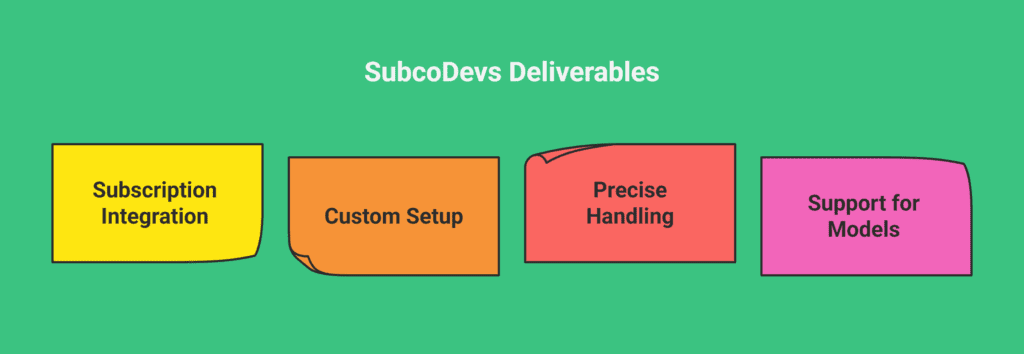
Want the Founder-Focused Version?
Get a concise version of this breakdown—and join the conversation—on our original LinkedIn article. It’s the perfect piece to share with fellow builders and growth-minded founders.
💡 Final Thought: Build for Scale Before You Need to
RevenueCat didn’t reach $500M by adding features—they got there by removing friction.
They didn’t win by marketing hype—they won by building quiet, powerful infrastructure that scaled with their customers.
If your current monetization system is buggy, inflexible, or hard to manage—it’s more than a dev headache. It’s a revenue risk.
Let’s fix it. SubcoDevs will help you build a stronger monetization engine, designed for growth.
